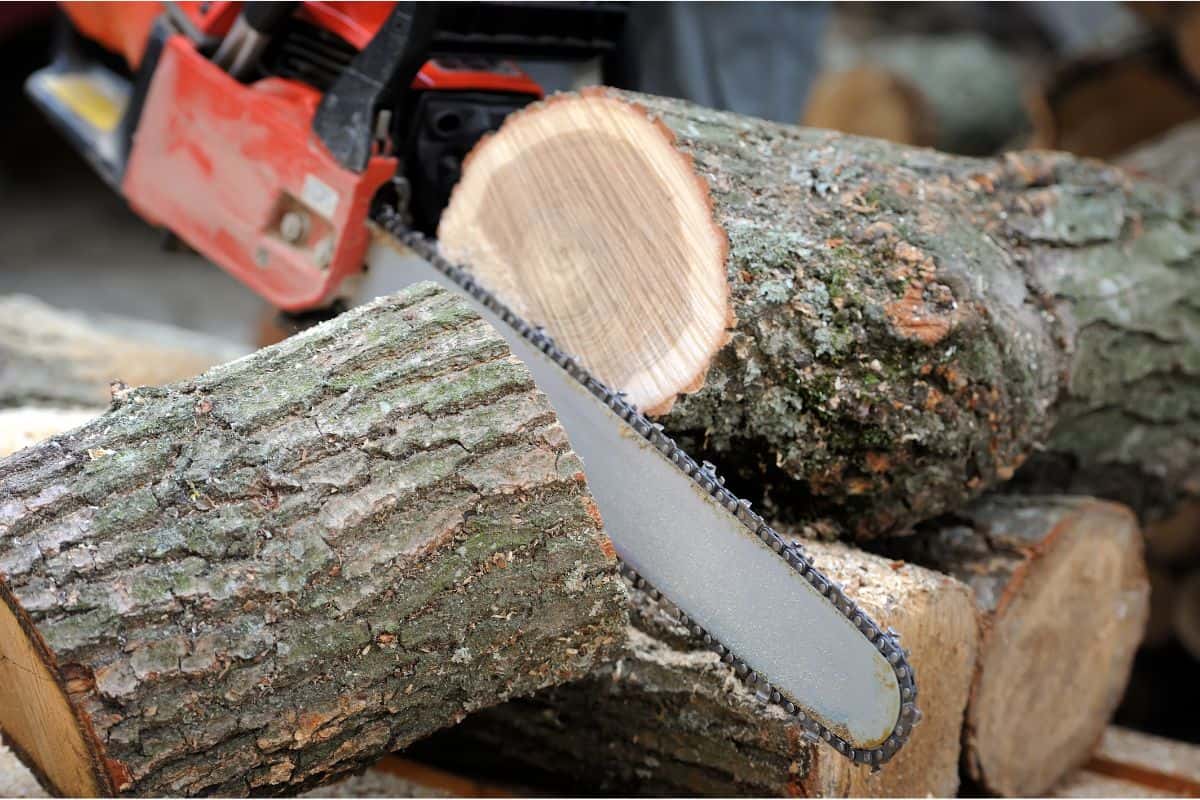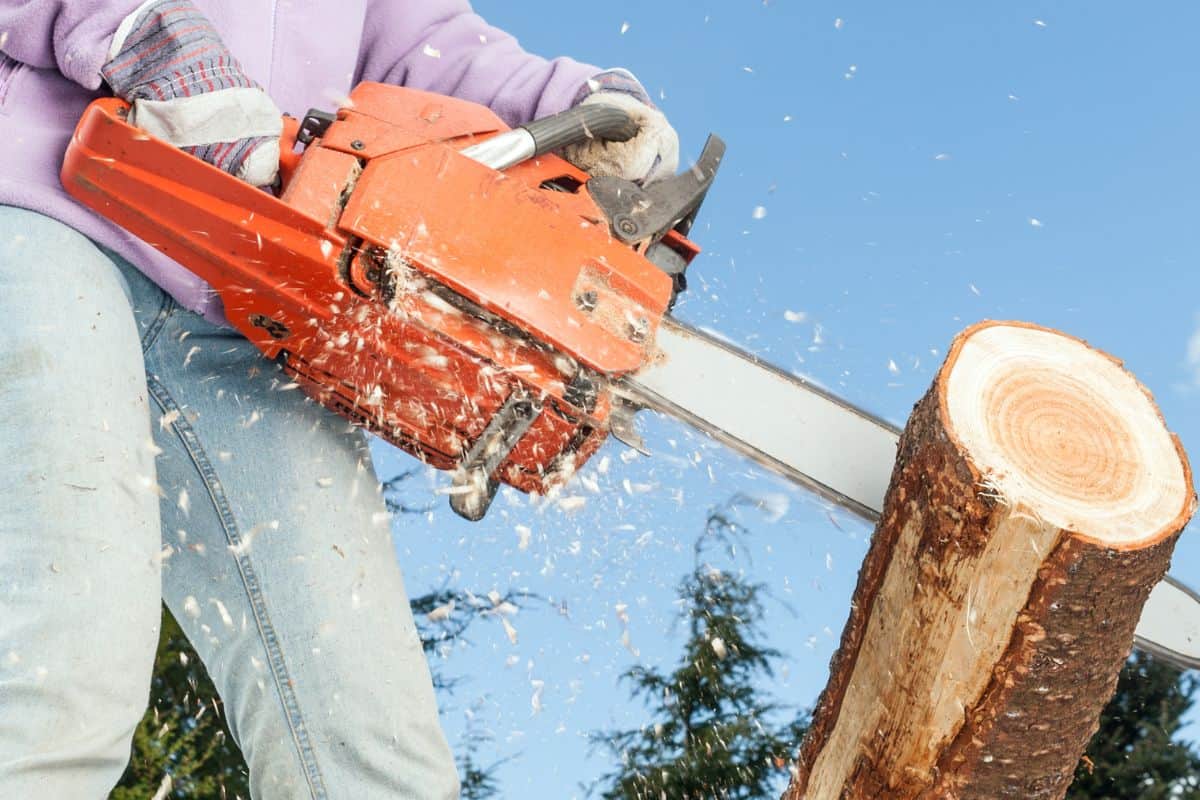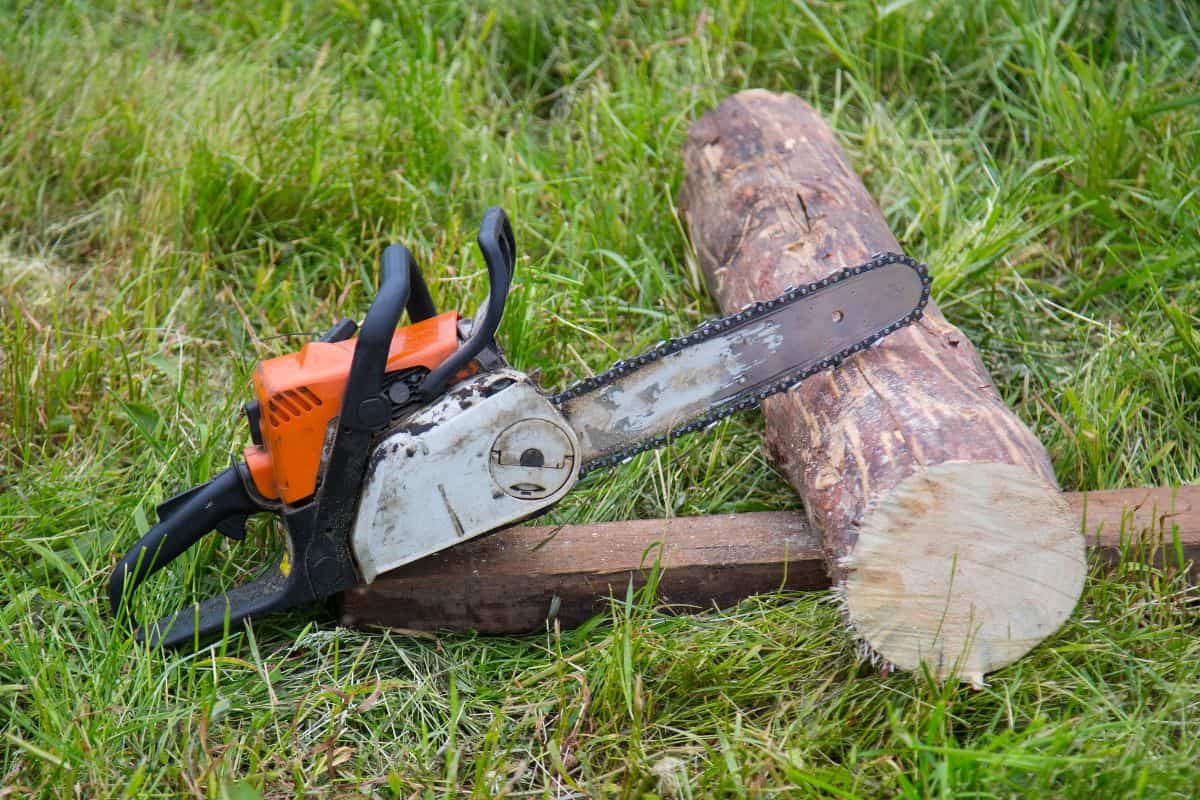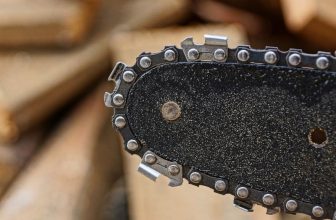How Does a Chainsaw Work – Detailed Guide
A chainsaw is a powerful tool used for cutting wood, tree limbs, and other hard materials. It’s a popular choice among landscapers and tree care professionals and is also used by do-it-yourselfers for tasks such as trimming trees and cutting firewood. Today there’s a large variety of these tools on the market, from the most affordable chainsaw to very expensive and multi-functional ones. This article will explain the inner workings of this useful tool.
It works by using an internal combustion engine to rotate a chain saw’s guide bar, which powers the cutting chain. The cutting chain consists of a series of links, with teeth that are specially designed to cut through materials, and a chain brake is used to stop the chain saw in an emergency.
Contents
What Is a Chainsaw?
A chainsaw is a powerful tool that’s used to cut through thick materials like wood. It has a long, sharp blade that’s attached to a rotating chain. The chain is driven by a motor, and the blade cuts through the wood as the chain moves around the blade.
Chainsaws are typically used to cut down trees, but they can also be used to cut through other thick materials like concrete. They can be either handheld or mounted on a stand. Handheld chainsaws are smaller and lighter, and they’re easy to maneuver. Mounted chainsaws are larger and heavier, but they’re more stable and can make longer cuts.
Chainsaws are very powerful tools, and they can be dangerous if they’re not used properly. Always wear protective gear, such as gloves, goggles, and earplugs, when using it. Be sure to read the manual how to work a chainsaw before using this tool, and follow all safety instructions.
Components of Chainsaw
The heart of a chainsaw is the two-cycle internal combustion engine. This engine works by mixing fuel and air in a specific ratio and then igniting it with a spark. The burning mixture creates a powerful force that drives a piston inside the chainsaw’s cylinder. As this piston moves up and down, it rotates the crankshaft, which in turn rotates the chain saw’s guide bar.
The saw chain is a key component of the chainsaw. It consists of steel links held together by rivets and has sharp teeth that cut the wood. The chain is moved around the guide bar by the sprocket, and as it moves, the teeth cut the wood.
The cutting chain is held on the bar by the nose sprocket, which is a small wheel with teeth that engage with the chain. The nose sprocket and bar form a unit called the nose. The drive link has two inside cutters and two outside cutters. The tie strap fastens the chain around the nose. The cutting teeth are the parts of the chain that do the cutting.
Finally, a work chainsaw brake is applied to stop the chainsaw in an emergency. This brake is activated by a switch on the side of the chainsaw, and it works by using centrifugal force to stop the chainsaw’s rotation.
Types of Chainsaws
A chainsaw is a powerful tool that’s typically used to cut through tree branches and trunks but can also be used to cut through other materials such as metal or concrete. There’re different types of chainsaws available on the market, and each type has its own set of features and benefits.
Gas
The most common type of chainsaw is the gas-powered chainsaw. This type is typically the most powerful type of chainsaw available, making them ideal for heavy-duty cutting jobs. However, gas-powered chainsaws can be more difficult to start and maintain than other types of chainsaws.
Electric
Electric chainsaws are another popular type of chainsaw. They’re typically lighter and quieter than gas-powered chainsaws, making them ideal for home use. They also tend to be easier to start and maintain than gas-powered chainsaws. However, electric chainsaws may not have the same power as gas-powered chainsaws and may not be able to handle as heavy-duty of a cutting job.
Battery
Battery-powered chainsaws are a newer type of chainsaw that’s becoming increasingly popular. They’re similar to electric chainsaws in that they’re lighter and quieter than gas-powered chainsaws. However, they have the added benefit of being cordless, making them even more convenient to use.
How Does an Electric Chainsaw Work?
The electric chainsaw has a motor that’s powered by electricity. The motor turns a chain that has teeth on it. The chain is wrapped around a guide bar. The guide bar is what the chain sits on and is what the teeth cut through the wood with.
The operator holds the chainsaw in both hands and presses the trigger to activate the motor. The chain then starts to rotate around the guide bar. The operator guides the chain through the wood as it cuts.
How Does a Gas Chainsaw Work?
A gas chainsaw has a two-stroke engine that uses a mixture of gas and oil. The gas powers the engine, while the oil lubricates the moving parts. When you pull the starter cord, the engine starts up and the chain begins to rotate.
The speed of the chain is controlled by a trigger on the handle, which you can squeeze to make the chain go faster.
The saw also has a brake that you can engage to stop the chain from spinning. This is important for safety, as it prevents the chain from continuing to spin and potentially causing injury.
How Does a Battery Chainsaw Work?
The battery chainsaw is very similar to a gas-powered chainsaw in terms of how it works. The main difference is that instead of using gas and oil to power the saw, it uses a battery.
The battery chainsaw has several advantages over the gas-powered chainsaw. One of the most notable advantages is that it’s much quieter than a gas-powered chainsaw. In addition, it’s much lighter and easier to handle, and it produces no emissions.
Another advantage is that it’s much easier to start than a gas-powered chainsaw. With a gas-powered chainsaw, you need to pull a cord to start the engine. With a battery chainsaw, you simply need to press a button.
The battery chainsaw also has some disadvantages. One of the most significant disadvantages is that it does not have the same power as a gas-powered chainsaw. As a result, it’s not suitable for heavy-duty tasks. In addition, the battery only lasts for a certain amount of time, and it needs to be recharged after each use.

FAQ:
How fast does a chainsaw spin?
The speed of a chainsaw is measured in revolutions per minute (RPM). Most chainsaws have a maximum speed of around 10,000 to 15,000 RPM. However, some professional-grade chainsaws can reach speeds of up to 20,000 RPM.
How does a chainsaw cut?
A chainsaw cuts by using a sharp chain that rapidly rotates around a metal guide bar. The guide bar is held in place by the chainsaw body, which the operator holds with both hands. As the chain moves around the guide bar, it cuts through the material that’s being cut.
Will a chainsaw run without a chain?
No, a chainsaw will not run without a chain. The chain is an important part of a chainsaw, as it’s the part that does the cutting. Without the chain, the chainsaw would not be able to cut through anything. The chain is a series of metal links that are connected together in a loop, and it’s driven by the motor of the chainsaw. The chain needs to be properly maintained and sharpened in order for the chainsaw to work properly.
Conclusion
While they may seem like a relatively simple tool, chainsaws can be quite dangerous if not used properly. That’s why it’s important to understand how do chainsaws work and how to use them safely. No matter what size chainsaw you use, always be sure to wear proper safety gear, including gloves, eye protection, and ear protection. Follow the manufacturer’s instructions for using the saw, and never try to force the saw to do something it’s not designed to do. With a little bit of knowledge and care, chainsaws can be a great addition to your home tool arsenal.
Also Read:
- Chainsaw Chain Types
- How to Cut Down a Tree With a Chainsaw
- What Are the Different Parts of a Chainsaw
References:
- Two-stroke engine (Wikipedia): https://en.wikipedia.org/wiki/Two-stroke_engine
- Centrifugal force (Britannica): https://www.britannica.com/science/centrifugal-force
- Chainsaw Chain Speed Calculator (Academy Calculator): https://calculator.academy/chainsaw-chain-speed-calculator/
“A good tool stays with you for many years and choosing carefully ensures the job is done right, your work is neat, and the tool is always a pleasure to use”







